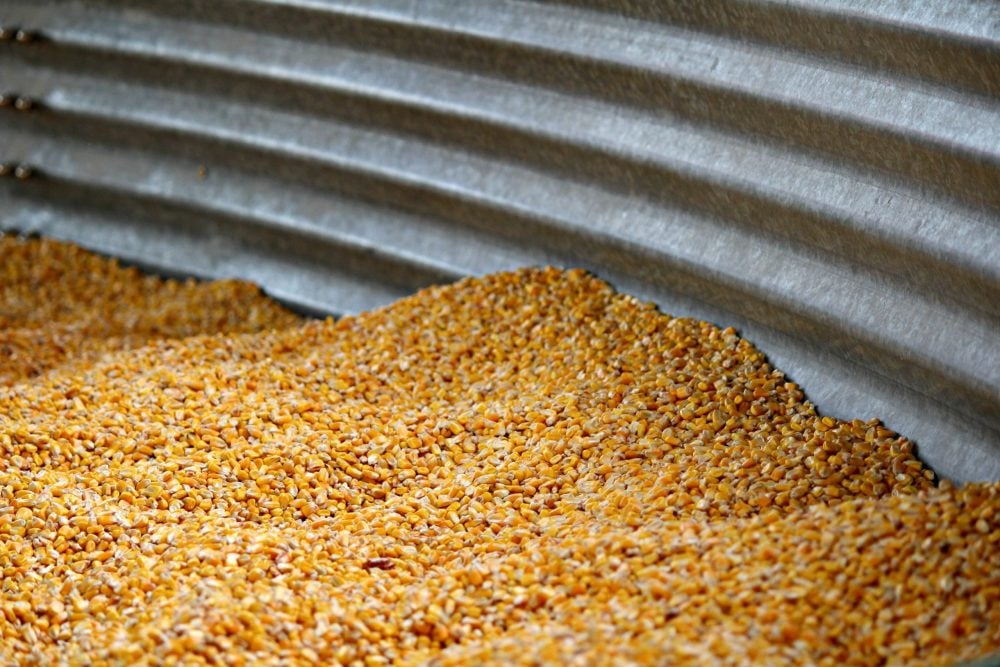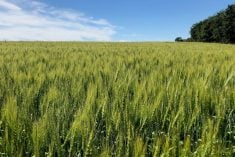Wheat futures keep trying to rally. Time after time, the rallies fail. The markets seem stuck in low-level ruts.
In early February, futures advanced more than 50 cents, then retreated. In early March, futures gained 45 cents, then gave it all back. Early April saw a 30-cent rally fail.
Despite these failed attempts, is the bearish pressure finally at or near the end of the line? Is a major recovery around the corner?
Although I retired from the daily analysis of crop futures markets almost 2 1/2 years ago, I still check in to see how they’re doing. I don’t pay much attention to the daily ups and downs, the ongoing flow of market news or the short-term factors that influence commodities.
Read Also

Cycle swings dictate farming profitability
It can be profitable to understand where the crop markets are positioned in the context of their big-picture cycles.
What interests me is the action displayed by the long-term, monthly charts. Readers may be intrigued by what I see there today.
In focus: Chicago soft red winter wheat
The big-picture chart patterns imply that, for wheat, the worst of the bear market is over. However, more low-level trading could lie ahead before major lows are completely formed.
As a market analyst, I talked about the higher pricing paradigm that grain and oilseed futures entered in late 2007 and early 2008. At that time, a macroeconomic commodity upswing hoisted a long list of futures markets into higher and wider ranges. Chicago wheat shot briefly above US$13 per bushel before relaxing into a range of $13-$14 on the upper end and the $3.50-$4.50 area on the lower end.
In the last few years, the market has declined from a second major peak caused partly by Russia’s invasion of Ukraine in 2022. So far, this decline has lasted about three years.
What we see now is a loss of downside momentum in that bearish trend. Although the market is still above the lows of 2009-10 and above the deeper lows of 2016-17, it has reached a level that’s not far above those support zones. It’s a pretty good bet that the bulk of the bear market is now in the past.
Grain futures markets tend to peak with short, sharp jabs higher, like mountain peaks. They tend to bottom more gradually, in slow-forming valley lows. Trudging through these valleys can take a long time. Sometimes it takes several years for major lows to form.
The current bottoming phase could be lengthy or could be over more quickly than usual. Either way, we will likely look back to see that the low ebb was not too far from the present trading range.
The basic message from the long-term charts?
The timing of a bottoming process is hard to call. Chicago wheat could chop along in the $4-$7 ballpark for another four or five years. Eventually it will finish bottoming and rise substantially, possibly back to the upper end of the range.
There is also a possibility that the lowest price, US$5, was seen in the summer of 2024. It’ll be interesting to see if the normal harvest pressure this summer shoves futures below those year-ago lows. If it doesn’t, that would be an encouraging signal.
You might hope the comeback happens soon. Be careful what you wish for. The deeper the bottom and the longer the bottoming process, the greater the eventual recovery.
In focus: Minneapolis spring wheat
The Chicago soft winter futures are the most heavily traded and represent the leading wheat market of North America. For western Canadian growers, Minneapolis futures are the most relevant for spring wheat pricing.
The chart shows the 2008 explosion and 2022 secondary peak for Minneapolis Hard Red Spring wheat futures. The worst-case floor of support for this market appears to be around US$4.75. Last August the market sank briefly below $5.50, which may have marked the ultimate low.
Today you’re probably looking at a bear market that’s at the end of the line or not too far from it. But as with Chicago wheat, there’s no clear evidence that the final low is in place.
Signals of recovery to watch for
These markets are down low enough that some readers may want to start watching for positive signs that they are working to establish major, lasting lows and that a big-picture recovery is imminent.
One important signal: the inability of a market to keep falling despite what seems like bearish news. Resilience amid bearish developments is evidence of support. Something to watch for.
Another signal might come from the supply-demand sheets. Year-over-year production declines and shrinkage of ending stocks in the US and globally would offer underlying fundamental support. That’s not yet clearly happening.
More factors: weather, currency, corn
Weather will also play a role. Growing conditions in North America, Europe, India and China all matter. Add Russia to that list because it’s a big world exporter and there are problems reported with this year’s crop. Downturns in two or three of the world’s key production zones could spark a sharp recovery.
I’ll be checking in on the U.S. dollar. The 2008 boom in U.S. commodities was partly generated by a 40 per cent downswing of the U.S. currency versus a variety of non-US currencies. The US $ Index fell from 2002 to early 2008. Although the U.S. dollar is currently far above where it was in 2008, a major downswing could support a variety of US commodities, including wheat.
The direction of corn will influence wheat. Good weather in the U.S. corn belt would keep wheat under wraps. Poor weather, driving up corn, would give wheat a lift. Corn often posts a spring high and then relaxes over the summer. If that happens this year, corn’s weakness will weigh on wheat. However, if dry weather in July affects corn, wheat could follow. Corn is the wild card in the deck.
These signs of an impending recovery by wheat futures are yet not lining up but some may appear soon.
In summary, we can safely say the worst of the bear market is over. Additional moderate losses can’t be ruled out, but deep declines are unlikely. More work may be required before forging solid, lasting foundations for a sustained recovery phase.
Patience is a virtue.
John DePutter was a commodity market advisor for over 40 years. He is a general partner principal at Ag Capital Canada and watches the markets from London, Ontario.














